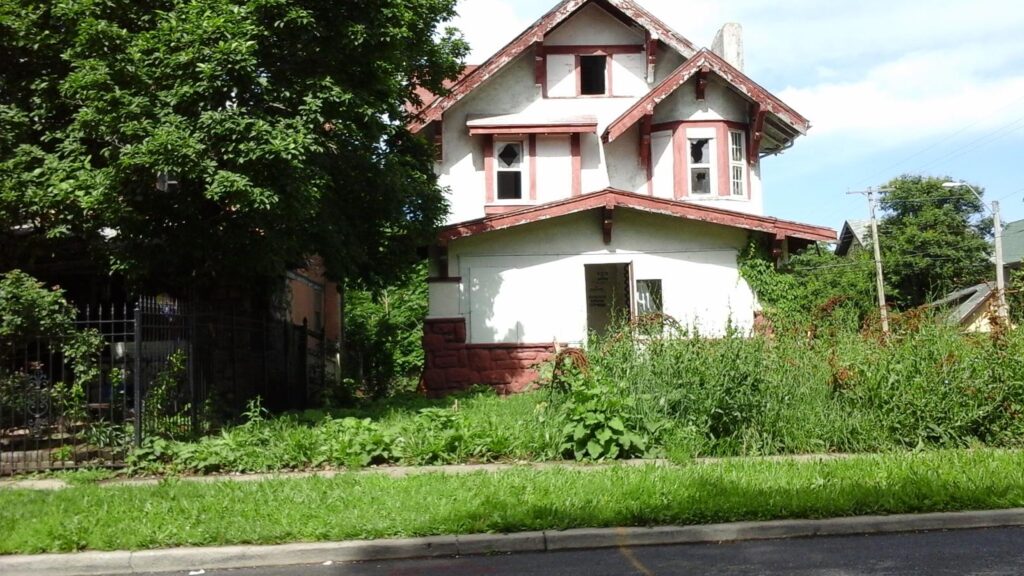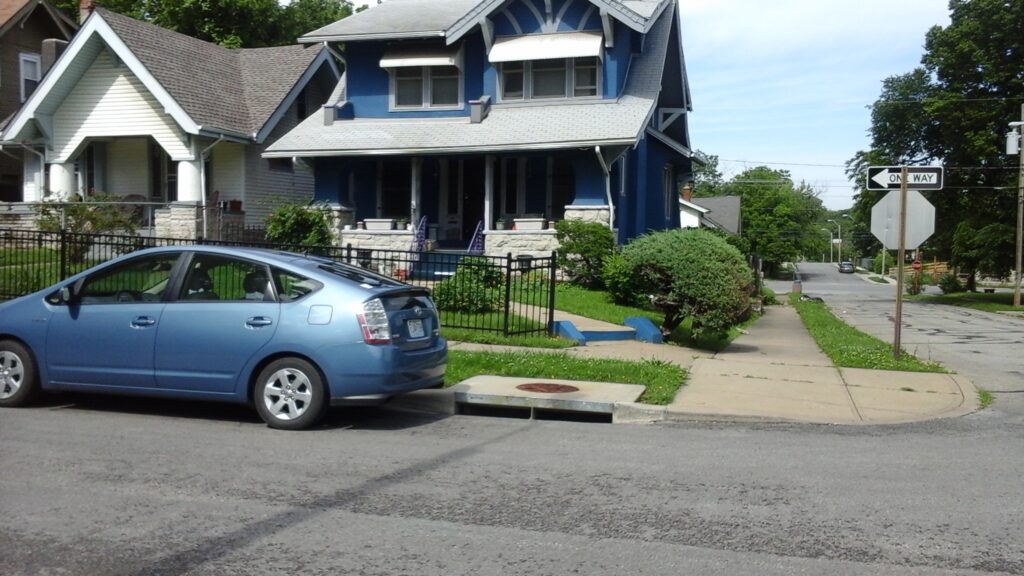By:
Dave Kingsley
The Chestnut Street Project
This is the first in a series of posts about the “Chestnut Street Project:” a group of citizens attempting to reclaim an African American neighborhood on the East side of Kansas City, MO. As part of the project, members of the group have undertaken research into residential property ownership in the area – neighborhoods abandoned and neglected by city government. Property records reveal that thousands of homes are owned by either investors or the Kansas City Land Bank.
The activists have set up a center of operations in a rehabbed house on the 3800 block of Chestnut Ave (see pictures below). The 32 houses on the block are for the most part in a state of abandonment and deterioration. A few homeowners still living on the block and in the neighborhood have made valiant efforts to maintain their homes while investors and the Land Bank neglect property which devalues all homes in the area.
What’s Ghetto Property Worth to Investors?
Why would limited liability corporations (LLCs), private equity firms, real estate investment trusts (REITs) and other entities invest in houses surrounded by vacant and/or deteriorating property in a neighborhood with high levels of poverty and few city amenities? High net worth individuals benefit in several ways from investing in dilapidated ghetto property. Given that wealthy investors tend to prioritize sheltering income from the IRS, rental property provides tax advantages in addition to revenue. For instance, residential homeowners living in their homes cannot take depreciation allowances in tax codes, but landlords can.
Second, low-income tenants often qualify for Section 8 housing subsidies. Hence, property that investors pick up very cheaply produces revenue from HUD that outpaces the market value of the property. Over the past few decades, HUD and city housing agencies have allowed slum lords to neglect property while they collect hefty rents. For example, one house on Chestnut Ave was owned by an Australian retirement fund. A family with several children lived in the home. People were dumping trash in the right of way directly behind the house about which the city and owner did nothing (even though we incessantly called the city about the problems). Polluted water was incessantly draining from a leak in the street next to the home where children played. The house was in disrepair and the yard overgrown.
Third, private equity firms and investors in general purchase property and make investments with other peoples’ money (OPM). Interest can be deducted from taxes – along with other business expenses.
Fourth, LLCs are pass through entities and do not pay corporate income taxes. Investors pay capital gains taxes, which are lower than taxes paid by many wage and salaried employees. Furthermore, capital gains taxes are often lowered further by other sheltering devices such as family trusts.
Two private equity firms have each bought hundreds of homes from the Land Bank, rehabbed them for little cost, and moved tenants in. This is a form of what one could call internal colonialism: out of state and out of country financial firms expropriate African American land, extract value from that land, and put little to no resources back into the neighborhoods.
Future posts will discuss the history of apartheid in Kansas City, the destruction of viable African American neighborhoods by federal, state, and city policy, and how ongoing city politics related to economic development is continuing to rob African American citizens of the wealth they have been able accumulate.



